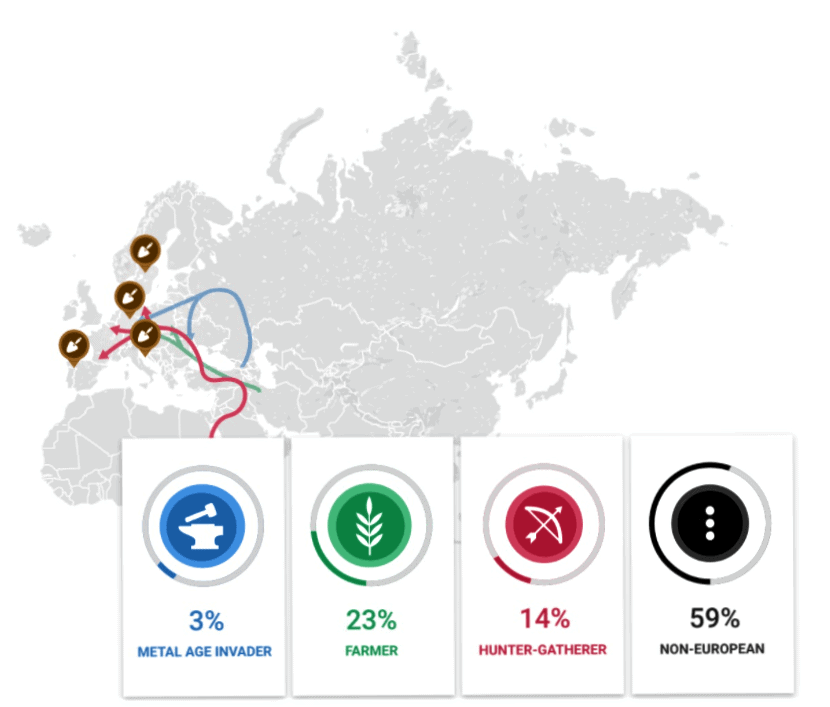Ever wondered where your grandfather’s grandfather’s grandfather lived or what he did for a living? Then, Family Tree DNA (FTDNA) is your tool of choice. It was established in 2000 and is regarded as one of the most trusted and reliable providers of DNA testing services. The company started out offering only Y-DNA, mtDNA, and Cohanim DNA tests. Ten years later, the company began offering autosomal testing with its ‘Family Finder’ product, which remains the leading choice among professional genealogists for DNA testing. This product has attracted many genealogists; thus, there is plenty of online support for understanding and using your test results.
Review Of Tests Offered By Family Tree DNA
FTDNA offers tests for autosomal DNA, YDNA and mTDNA.
- Autosomal DNA is a mixture of DNA that you get from all of your ancestors (Family Finder)
- YDNA is part of the DNA that only males possess and pass down directly to their biological sons
- mtDNA or mitochondrial DNA is part of the DNA only passed on by mothers to their biological children (both male and female).
Autosomal DNA – Family Finder Review
This test focuses on the autosomal DNA, which is inherited across generations. With this test, you can:
- Get a percentage breakdown of your origins
- Find relatives you share your autosomal DNA with within five generations
- Learn your connection with ancient European groups
- Compare matching segments of DNA (blocks) with your genetic matches
- Receive a haplogroup that can help you trace your direct parental line ancestors
Family Finder by Family Tree DNA examines over 50,000 markers to trace the ancestral line of the user.
The analysis provides details of the user’s ethnic origin as well.
FTDNA uses a proprietary algorithm to discover individuals who may have a common ancestor within five generations on either side of the user’s family.
The test provides the names and email addresses of closely related individuals to aid in initiating contact.
Since personal information is involved, FTDNA only matches users with others who’ve also opted for the test.
Who Can Take The Family Finder Test?
This test is ideal for anyone who wants to learn more about their family’s heritage, culture, or ethnic background.
It matches the user to close relatives and breaks down their ancestor’s origin.
This test reveals the user’s and their family’s unique genetic identity.
How Does It Work?
You can send your DNA data through a physical kit (supplied by FTDNA) or upload a raw DNA data file from 23andme, MyHeritage, or AncestryDNA.
FTDNA recommends purchasing their kit to avoid missing out on any genetic information the tests might need.
The kit, which you can order on the site, contains:
- Two cheek swabs
- Two vials
- A specimen bag
- A return mailer
- A registration form
- An instruction manual
A basic test, costing $80, takes up to 6 weeks.
More complex tests can take up to 8 weeks.
Once the results are ready, you can access your complete genetic profile.
What’s In The Family Finder Report?
There are four segments of the Family Finder report
myOrigins
A breakdown of your geographical ancestry and ethnic background.
It contains a map with a ‘My Ancestral History’ panel for historical context on each result.
ancientOrigins
This feature, available only to people of European descent, searches for genetic matches to reveal migration routes across Europe and other groups that your ancestors may have interacted with.
It also reveals details such as the age at which they would have been living in a given region and the jobs they performed.
A map helps us understand these better.
Family Matching
This service creates a family tree.
It matches your genetic profile to other users and relatives most likely to fall in your maternal or paternal ancestral lines.
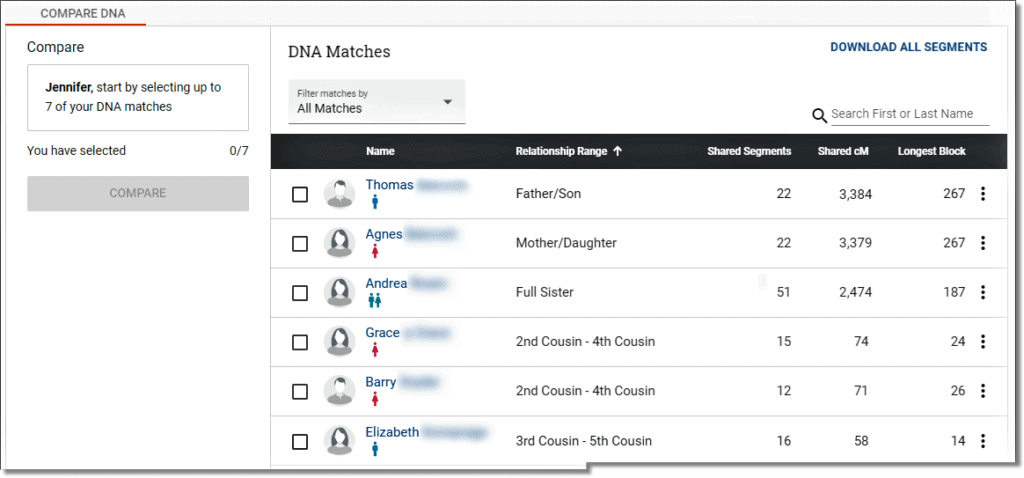
Chromosome Browser
Compares matching DNA segments with your genetic matches to reveal areas of similarity.
Chromosome Painter is another tool that helps reveal the ethnic source of each segment of your chromosomes.
Y-DNA Test Review
The Y chromosome is exclusive to the male gender and is often passed down from the father to the son without much changes in the genetic makeup.
Y-DNA tests the Y chromosome to investigate the male’s paternal family line.
A person taking this test will also receive a ‘Y-DNA haplogroup,’ which uncovers a paternal heritage going back to Africa, the cradle of life.
The following are the available YDNA test options:
| Y-37 | Y-111 | Y-700 |
| Costs $119 | Costs $249 | Costs $449 |
| Studies 37 genetic markers | Studies 111 genetic markers | Studies 700+ markers and 600k+ SNPs |
| Locates distant relatives | Can locate closer relatives | Can locate all relatives within a certain time frame |
| Less detailed migration map | Less detailed migration map | Highly detailed migration map |
Note that these tests are often on sale, with prices sometimes slashed by dozens of dollars.
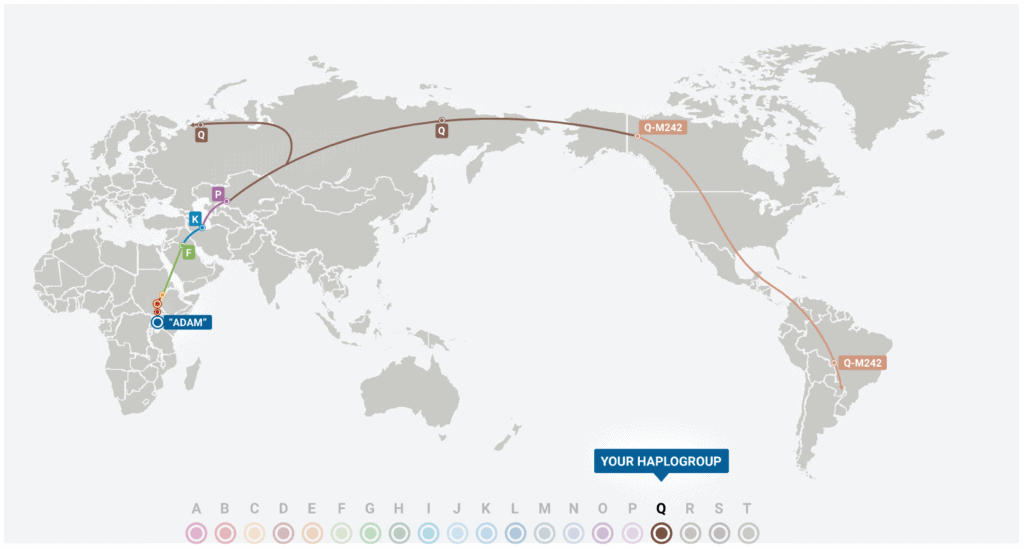
mtDNA Test Review
mtDNA stands for mitochondrial DNA.
A mother passes on this DNA to her children.
Though daughters and sons receive it from their mothers, men cannot pass it on to their children.
This test allows you to explore your direct maternal line and geographic origins.
You also learn about the migration patterns followed by your maternal ancestors.
mtDNA haplogroup uncovers your maternal heritage going back to Africa.
Since mtDNA mutates slowly, this test cannot tell much about your recent maternal generations.
The mtDNA test costs $159 on FTDNA’s website.
New Feature: Personalized mtFull Sequence Video
This feature, available for all users who have taken the mtDNA test, tells the story of your maternal ancestry and is a fun way to share your results with friends and family.
Since this feature is customizable, you can choose your avatar and provide some information about yourself. Take a look at the sample video below.
This video explains the basic concepts of your mtDNA results with your specific story in mind.
Source: FamilyTreeDNA Youtube channel
2024 Update: FTDNA Integrates With MyHeritage DNA
In July, MyHeritage announced an integration of FTDNA’s services into their website.
FTDNA’s users could easily transfer their family trees to MyHeritage and continue to build upon them there.
Since FTDNA doesn’t have the range of tools available on MyHeritage, this collaboration benefits users who can extract new insights from their family trees.
Additionally, FTDNA plans to end support for their family tree builder by September 9, 2024.
FTDNA users will be requested to transfer their existing trees to MyHeritage.
2021 Update: FamilyTreeDNA Merges With myDNA
In early January, FamilyTreeDNA merged with myDNA, an Australian pharmacogenetics company. FTDNA’s CEO stepped down. MyDNA focuses on lifestyle and wellness aspects like vitamins, minerals, and skincare.
After this merger, FTDNA customers received a “Health & Wellness Discovery Survey” that asked questions about health, fitness, and other lifestyle aspects, not genealogy or ancestry.
This news raises questions about the direction in which FTDNA is headed!
Advantages And Disadvantages Of Choosing FTDNA
FTDNA is a good choice for people wanting to learn more about their ancestry.
- Detailed reports
- Avenues to contact close relatives
- Transfer of raw DNA files
- Identifies relatives from maternal and paternal lines
- Provides a map of ancient ancestors
However, there are also some disadvantages to this test:
- A smaller pool of matches
- Lacks health-related screening
- No historical records
- Technical jargon in reports
- Certain tests are costlier than other services
FTDNA Family Finder vs. 23andMe DNA Relatives- Which Is Better?
23andMe and FTDNA enable customers to connect to close relatives.
While 23andMe’s DNA relatives came out in 2009, FTDNA released Family Finder a bit later in 2010.
Although FTDNA has a smaller database, its services surpass those of 23andMe. Features include maternal and paternal lineage tracking, a variety of tests, and a detailed report.
FTDNA provides easy-to-use DNA analysis kits to users who want to learn about their ancestry.
Regarding privacy, FTDNA provides options to opt out of law enforcement matching.
However, completely deleting genetic data or destroying a sample is quite tricky.
If a customer decides to do so, they must contact customer service.
With the tests and services provided, the user can learn about their maternal and paternal ancestry and the potential migration paths of their ancestors, including occupation and location.
Finally, FTDNA enables users to contact close relatives to promote positive relationships.
With features like accepting raw DNA files from other testing services and wellness reports, FTDNA is the better choice for DNA analysis services.
Do You Have Your DNA Raw Data From 23andme, AncestryDNA, FTDNA, MyHeritage?
Upload your DNA raw data to Xcode Life to get insights into 700+ health-related traits!
Others Are Also Reading
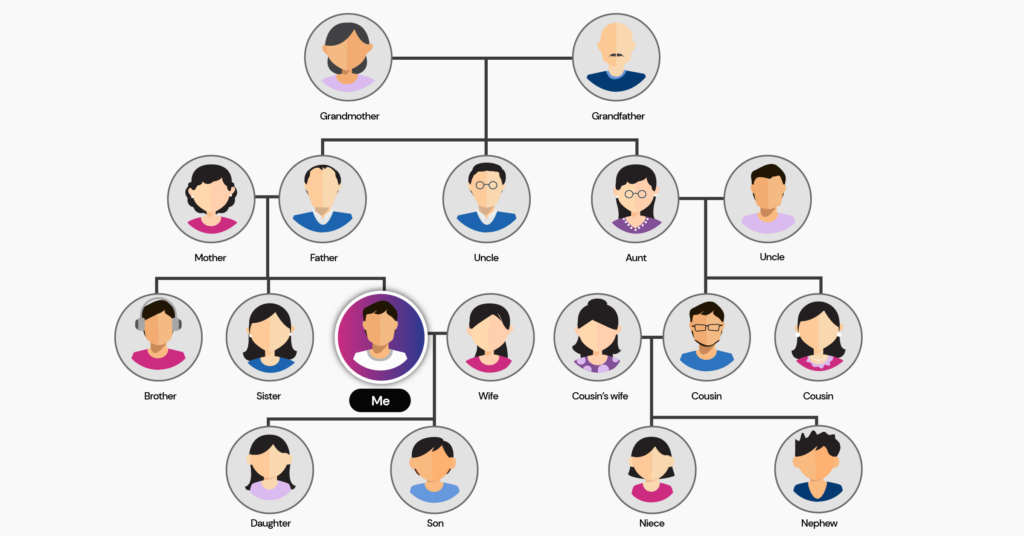
How To Use 23andMe Family Tree?

How To Download Family Tree DNA Raw Data File?
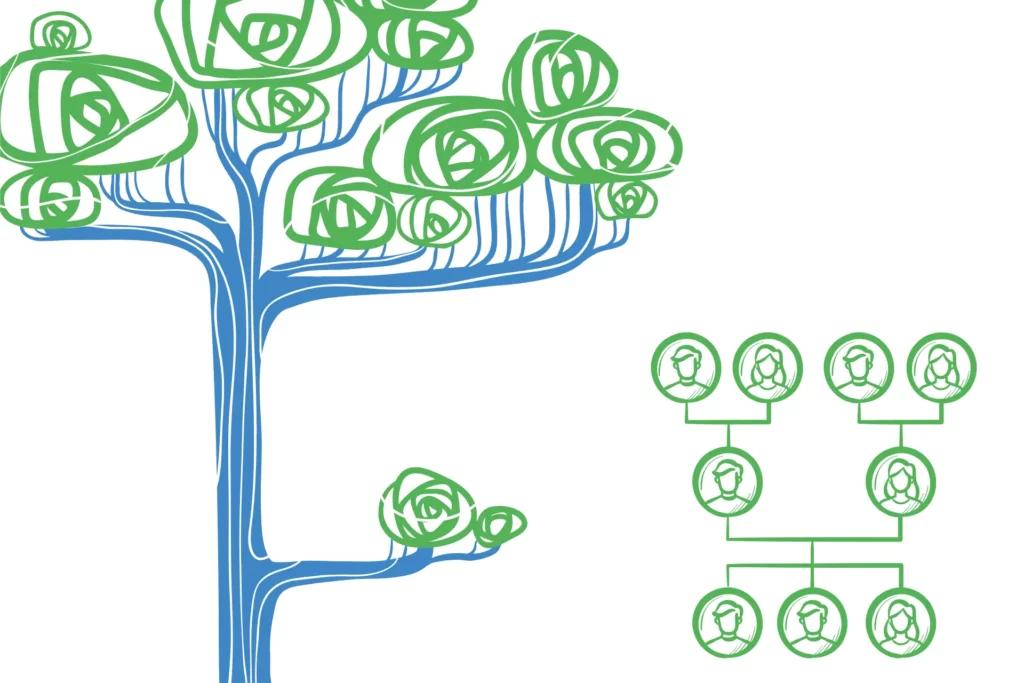
FamilyTreeNow: Free People Finder and Family Tree Builder Tool [2024]
Frequently Asked Questions
Is FamilyTreeDNA Secure?
FTDNA has a robust security policy protecting its users' personal information. It also gives users ample control over how their DNA data is processed, shared, and stored.
Is FamilyTreeDNA Better Than Ancestry?
While FTDNA is one of the best tools available to trace back your maternal and paternal lines, Ancestry’s database and accuracy are much better than those of most of its competitors.
What Are The Downsides Of Ancestry Testing?
Since different companies use different data and analyze different markers, results can vary between services. Limited data from some remote ethnicities may cause those results to become increasingly vague.

